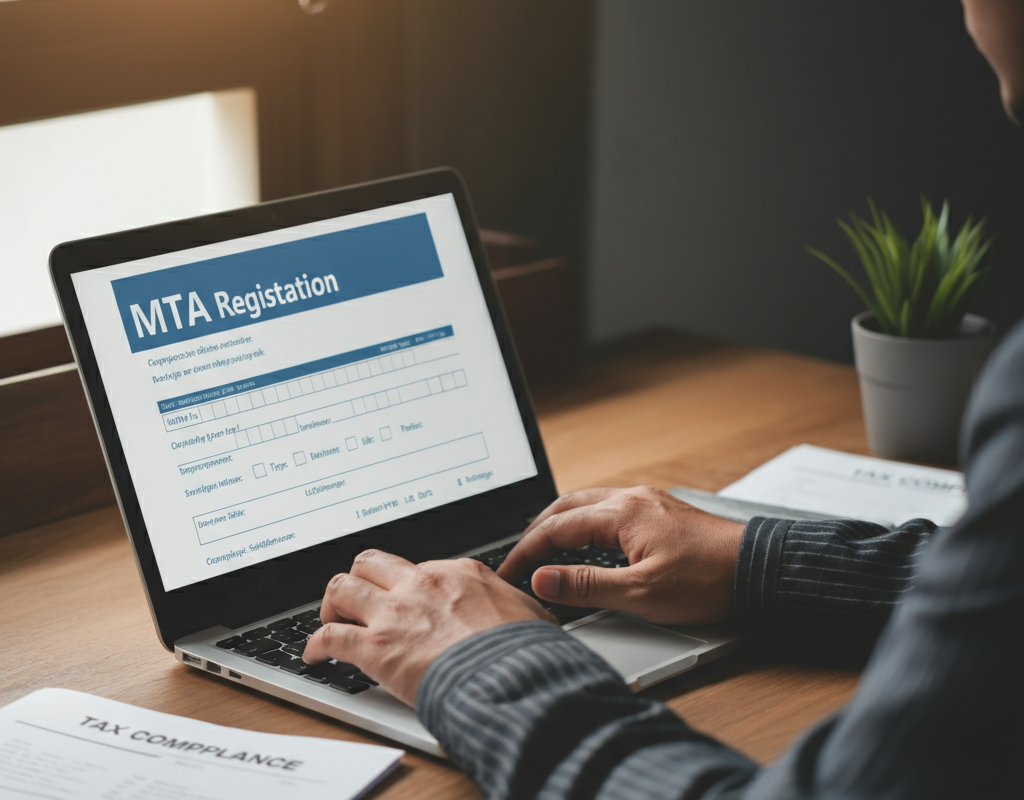Why MTA Registration is Essential for Your Tax Compliance
Staying on top of tax regulations is crucial when operating a legally compliant and successful business, particularly in the construction industry. One essential step in achieving this is obtaining MTA (Metropolitan Transportation Authority) registration. For contractors and companies working in areas under the jurisdiction of the MTA, this registration is more than a simple administrative process—it serves as a legal requirement and a way to enhance your business credibility.
What Is MTA Registration?
MTA registration refers to the process contractors, vendors, and businesses must complete to work on projects or provide services for the Metropolitan Transportation Authority. This registration ensures that all entities comply with the MTA’s stringent legal and tax requirements.
MTA registration primarily concerns payroll taxes for certain areas within New York State. It applies to those whose employees work in the MTA payroll tax region. It’s a critical step for businesses that operate within this jurisdiction or provide services to the MTA.
Understanding what this entails is the first step toward avoiding legal and financial pitfalls in your operations.
The Benefits of MTA Registration
Ensuring that your business is registered with the MTA comes with a wide range of benefits, not just for meeting compliance expectations but for improving your overall business standing.
1. Legal Protection
Remaining compliant with MTA tax requirements ensures that your business avoids legal penalties, fines, and other complications arising from non-compliance.
2. Business Credibility
Registered with the MTA assures clients and partners that your business is legitimate and operates within the law. It boosts confidence in your services and helps you stand out in a competitive market.
3. Access to Opportunities
MTA registration is often a prerequisite for bidding on contracts and projects under the MTA’s authority. Without it, your business could miss out on lucrative opportunities.
4. Simplified Tax Processes
Once registered, your business can streamline its tax reporting and payment processes within the MTA payroll tax framework. It reduces administrative burden and ensures accuracy.
By registering, you position your business as a responsible, seasoned, and reliable entity within your industry.
The Legal Requirements: Why Compliance Matters
Non-compliance with MTA registration is not just a minor oversight—it’s a significant legal risk. Businesses failing to register and adhere to MTA tax obligations may face hefty fines, retroactive tax penalties, and potential closures.
Under the MTA payroll tax, businesses operating within designated regions are required to remit payroll taxes on employee wages. It means that even if your business operates in another state but has employees in MTA regions, you must still register and comply.
Failing to comply could lead to reputational harm and diminished trust among clients and partners.
Step-by-Step Guide to Registering with the MTA
Becoming MTA-registered may seem overwhelming, but the process is manageable when broken down into clear steps.
Step 1. Determine Eligibility
Verify whether your business operates within the MTA region or employs workers in that jurisdiction. The MTA payroll tax typically covers specific areas in New York State.
Step 2. Gather Required Documentation
Prepare the necessary documents for registration. This usually includes your Employer Identification Number (EIN), payroll records, and proof of business operations in the MTA region.
Step 3. Create an Online Account
Visit the New York State Tax Department’s online portal to create your business account. This step is vital for managing your registration and filing your tax forms.
Step 4. Complete the Registration Form
Fill out the required application forms with accurate details. Ensure that all employee and payroll information is up to date.
Step 5. Submit and Confirm Registration
Apply online. Once processed, you will receive confirmation and your MTA tax registration number.
Step 6. File and Pay MTA Taxes
After registration, make timely payroll tax filings and payments to stay compliant. Ensure your reporting aligns with the guidelines set forth by the New York State Tax Department.
Common Mistakes to Avoid During Registration
While registering with the MTA is straightforward, there are some common pitfalls businesses should steer clear of.
- Providing Incorrect Information
Double-check all details on your application. Errors in your payroll or business information can delay the process or result in rejection.
- Missing Deadlines
Failing to meet tax filing or payment deadlines can result in penalties. Mark filing dates on your calendar and set reminders to avoid delays.
- Neglecting Updates
If your business information changes—such as employee increases or relocations—update your records with the MTA immediately to prevent non-compliance.
You can avoid these mistakes and ensure a smooth registration process by staying vigilant and proactive.
FAQs About MTA Registration
1. Who is required to register for MTA payroll taxes?
Any business employing individuals in the MTA region is required to register. It includes firms operating out of state but employing workers in that jurisdiction.
2. What happens if I fail to register?
Failure to register can result in fines, interest on unpaid taxes, and potential legal action.
3. How often do I need to submit payroll taxes?
MTA payroll taxes are typically submitted quarterly, which may vary based on your specific business and employee circumstances.
4. Can I register as an independent contractor?
Independent contractors usually aren’t required to register but should consult a tax advisor to confirm obligations.
5. Is registration required for non-profits?
Yes, non-profits with employees working in the MTA region must still register and pay payroll taxes.
Stay Compliant and Build Credibility
MTA registration is vital for contractors and businesses working within the MTA region. Beyond legal compliance, it provides numerous benefits, from business credibility to exclusive opportunities.
Don’t wait—start the registration process today to ensure you’re compliant and ready to take advantage of the opportunities in the MTA region.
For further assistance, consult a tax professional or explore resources on the New York State Tax Department’s official website.











Post Comment